History of Computer Science
You may have never heard the names Blaise Pascal, Ada Lovelace, Charles Babbage, Alan Turing, or John von Neumann, but you wouldn't be programming today if it weren't for the foundational work they did in computer science, mathematics, and computational theory. Today we'll discuss early analogue computing, development of digital computers, and up to the beginnings of higher-level programming languages and the internet.
Before we start...
Let's define a few words so we're all on the same page about what they mean
Word
Definition in this Context
Mechanical
relating to physical forces or motion; physical.
Analogue
relating to or using signals or information represented by a continuously variable physical quantity such as spatial position or voltage.
Compute
To calculate or evaluate
Turing-Complete
Computationally universal - can model/solve any problem
High-Level Language
In contrast to assembly languages, a programming language that abstracts the code from the particular computer
What is a computer?
The word computer originally referred to the person who was doing the computing. More specifically to frame the history of computing, what we'll start out discussing is the history of machine-assisted human computation.
Antiquity
The Abacus
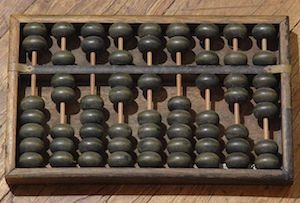
Yes, the first computing tool was an abacus - an early, manual calculator. To the best of anyone's knowledge, it was invented by the ancient Sumerians between 2700 and 2300 BC.
Notice an abacus, like other early computing devices were mechanical (meaning dictated by physical forces), not electrical. The ideas of computing and algorithms are rooted in mathematics.
The Antikythera Mechanism
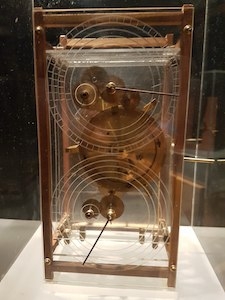
The Antikythera Mechanism is thought to be the first analog computer, and was developed in ancient Greece around the first or second century BC. It is so named because it was discovered in a shipwreck off the coast of the Greek island Antikythera in 1901.
Antikythera is northwest of Crete. Here is a map of the area:
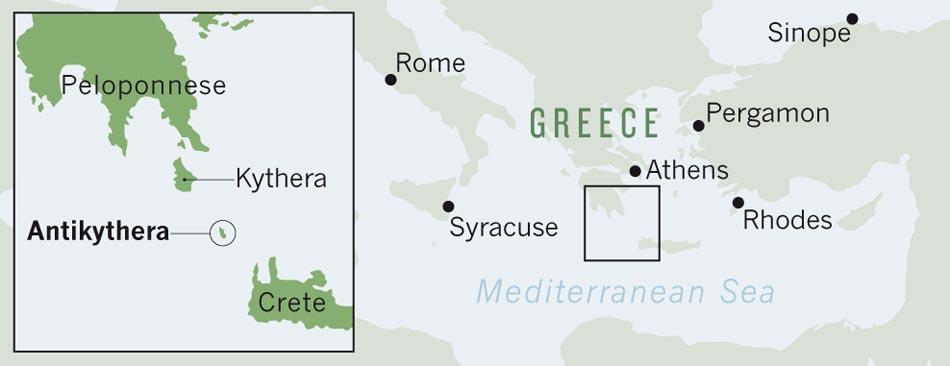
It was used for various astronomical calculations such as predicting eclipses and irregularities in the moon's orbit, and for tracking all then-known heavenly bodies. The importance and sophistication of this artifact was overlooked until 2006 because it was originally thought to be far too advanced for the time period. In fact, it precedes any other known clockwork mechanisms of similar complexity by more than a milennia.
According to Wikipedia, "The quality and complexity of the mechanism's manufacture suggests that it has undiscovered predecessors made during the Hellenistic period". The Hellenistic period is the time period between the death of Alexander the Great and the emergence of the Roman Empire.
Other Early Advancements
Roughly contemporary with the Antikythera mechanism, an Indian mathematician named Pingala, is credited with the first use of a binary number system. It used long and short dashes and was similar to Morse code.
Middle Ages
During this time period, advancements in mathematics and further understanding of things like floating point numbers set the stage for future developments. Mechanical clocks and geared mechanisms became more advanced. The first true computers were based on clocks and calculators.
The binary number system was refined and popularized in the Western world centuries later in the late middle ages by Gottfried Wilhelm Leibnitz.
Early and Mid-Modern Era
Pascal's Calculators
In 1642, while still a teenager helping his father with tax collection duties in France, Blaise Pascal invented a mechanical calculator. These were later known as Pascal's Calculators or Pascalines. While other attempts had been made, this was the first fully functional and properly working version.

The programming language [Pascal](https://en.wikipedia.org/wiki/Pascal_(programming_language)) is named in honor of Blaise Pascal.
Babbage's Analytical Engine
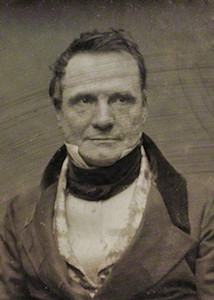
Charles Babbage designed a new kinds of mechanical calculator - his analytical engine. This went beyond his original design of a differential engine (basically an advanced mathematical calculator), and provided the first idea of a programmable computer. It's the first design for a computer that could be considered Turing-Complete in the modern sense of how we think of computers, although when Babbage was designing his analytical engine, Alan Turing was not even born yet.
Babbage's analytical engine's design was ground-breaking. No one, up until that point had designed any machines that were this general in usage. The analytical engine was not built in Babbage's lifetime, but later models suggest his machine would have worked.
Details
Babbage's analytical engine took input of 'formulae' and 'data' - which were to be fed into the machine via punchcards - similar to mechanical looms of that time period. There was to be a 'store' which had room for 1000 40-digit numbers (or about 16kB). The internal operations supported included basic mathematical operators, comparison operators, and square roots. Loops and conditionals were also possible. The language used would be similar to modern-day assembly languages.
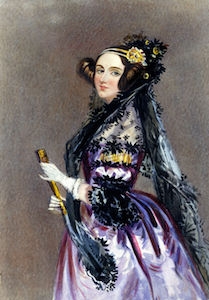
Ada Lovelace corresponded with Babbage during his development of the analytical engine, and developed a working relationship and friendship with him. She wrote an algorithm that would allow the engine to compute Bernoulli numbers (a recurring theme in number theory), and is thus credited as the first programmer, even though no programming languages had been invented yet. She wrote the first algorithm intended to be carried out by a machine.
US Census
In the United States, census data is collected every ten years. In 1880, the US Census count took seven years. Population trends indicated that the 1890 census might take over 10 years, so they looked for another solution by holding a contest to find a better way to do it. A census department employee named Herman Hollerith won the contest. He would later go on to found the Tabulating Machine Company, which later became IBM. His solution used punchcards to input the data and mechanical relays to increment the count.
Modern Era
Alan Turing
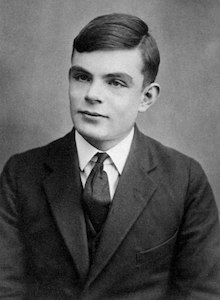
Alan Turing is considered the father of theoretical computer science and artificial intelligence. He formalized the meanings of words algorithm and computation. He worked at Cambridge University and later performed critical code breaking work for the British during World War 2.
Turing also developed the idea of a Turing machine. A Turing machine, simply stated, is a machine that can model any kind of algorithm with an answer. For the sake of argument, we usually don't consider any memory constraints. For a more detailed explanation in layman's terms, see this reddit post.
The 1940s: World War 2 and Early Digital Computers
While discussing the advent of the modern computer, it's nearly impossible to avoid discussing the second world war. Many advancements in the field of computing on both sides were made to further the war effort. While people like Turing were working on decryption for the allied forces, people like Konrad Zuse were working in Germany. Zuse's work was ignored or understated for a long time due to the fact that he worked for the Nazis. For his part, he never became a member of the Nazi party but also never expressed any qualms about working for them. An exerpt from Wikipedia says the following:
"While Zuse never became a member of the Nazi Party, he is not known to have expressed any doubts or qualms about working for the Nazi war effort. Much later, he suggested that in modern times, the best scientists and engineers usually have to choose between either doing their work for more or less questionable business and military interests in a Faustian bargain, or not pursuing their line of work at all."
Make of that what you will - this is a history lesson, and not meant to put a value judgment on a person's choices, this is merely meant to summarize advancements in the field of computing. In fact, Zuse's [Z3](https://en.wikipedia.org/wiki/Z3_(computer)) computer is considered the first modern, Turing-complete, fully-programmable digital computer, and the programming language he used, Plankalkül was the first high-level programming language.
Plankalkül Features/Limitations
Only local variables
No recursion
Only call by value
Composite types: arrays and tuples
Conditionals (if, else)
For and while loops
Only primitive data type is a single bit
ENIAC, EDVAC, and EDSAC
Meanwhile in the United States, the ENIAC (Electronic Numerical Integrator and Computer) was created by the US Army's Ballistic Research Laboratory. John Von Neumann was a mathematician working on the hydrogen bomb at Los Alamos. When he heard about the ENIAC, Los Alamos became heavily involved with it as well, and ran the first program on the ENIAC, which was a test of the feasibility of a thermonuclear weapon. The I/O for this test used 1 million punch cards.
John Von Neumann subsequently worked on the EDVAC (Electronic Discrete Variable Automatic Computer). Unlike the ENIAC, it used a binary number system rather than a decimal system. When describing the design of this computer, Von Neumann described the basic architecture of the modern computer. This is known as Von Neumann architecture.
The EDSAC (Electronic Delay Storage Automatic Calculator) was inspired by the EDVAC and was the second computer to use Von Neumann's architecture.
What about memory?
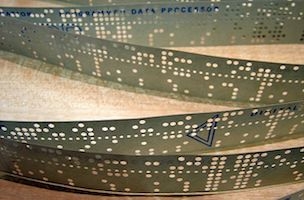
Early computers used punch cards or paper tape to do I/O - literally holes in a piece of paper. Here is an example of a 1950s IBM punch card:
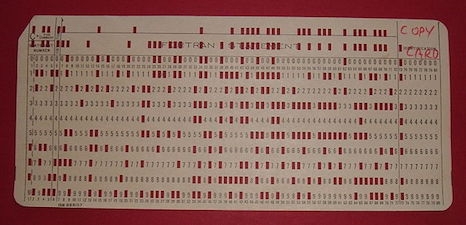
The Interesting Life of John Von Neumann
(Summarized from Wikipedia)
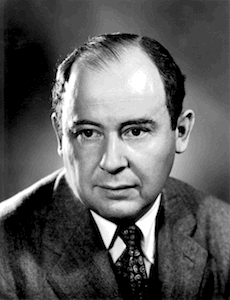
John Von Neumann was noted for his cognitive abilities even among other intellectuals. At age 6 he could divide 2 8-digit numbers in his head and coverse in Ancient Greek. At 8, he was familiar with differential and integral calculus. College professors of Von Neumann admitted that he would often come back the next day having solved a previously unsolved problem. He had an eidetic memory, meaning he had a high degree of recall with only brief exposure. He had memorized the phone book and was known to entertain friends by asking them to call out a page and he would recite the names, numbers, and addresses on it. According to Herman Goldstine, who worked on ENIAC, Von Neumann could recite every book he ever read.
Von Neumann was one of the [Martians](https://en.wikipedia.org/wiki/The_Martians_(scientists)) - a group of prominent Hungarian-American Scientists whose acheivements are briefly listed below. Besides Von Neumann, the other Martians included:
Name
Notable Acheivements
Theodore von Kármán
Contributions in aeronatics/astronautics, advancements in aerodynamics, worked at JPL, awarded National Medal of Science by JFK
George de Hevesy
Nobel Prize in Chemistry, discovered element Hafnium, developed radioactive isotope tracers
Leó Szilárd
Patented nuclear reactor, wrote a letter with Einstein that resulted in the Manhattan project, cured his own cancer with cobalt 60 treatment he developed himself, numerous contributions and awards
Dennis Gabor
Nobel Prize in Physics for invention of holography/holographic methods, numerous other awards
Eugene Wigner
Nobel Prize in Physics for contributions to theory on atomic nuclei and elementary particles, work on the Manhattan project, numerous other contributions and awards
Edward Teller
'The father of the hydrogen bomb', numerous contributions to nuclear and molecular physics, spectroscopy, and surface physics
Paul Erdős
Extensive contributions to mathematics (discrete mathematics, graph theory, number theory, set theory, probability theory, etc.) - 1500 papers, still unsurpassed
One of them, Eugene Wigner, was asked why the Hungary of his generation had produced so many geniuses. Wigner, who won the Nobel Prize in Physics in 1963, replied that Von Neumann was the only genius.
Edward Teller admitted that he 'never could keep up with him'. Teller also said 'von Neumann would carry on a conversation with my 3-year-old son, and the two of them would talk as equals, and I sometimes wondered if he used the same principle when he talked to the rest of us.'
Fun Fact: John Von Neumann invented the merge sort algorithm - he wrote down the algorithm - with pen and paper - on 23 pages!
The 1950s and the Advent of High-Level Programming Languages
With the development of the first Turing-complete computers, soon followed the development of programming languages to use on them. The four biggest ones from the 1950's were:
FORTRAN (1957) - First to use a compiler
[LISP](https://en.wikipedia.org/wiki/Lisp_(programming_language)) (1958) - First procedural programming language
ALGOL (1958)
COBOL (1959)
(Beware - acronym-overload!)
FORTRAN
FORTRAN, first released in 1957, stands for 'FORmula TRANslation'. It is considered a high-level language and was the first language to use a compiler to translate high-level code down into machine code. It is known for being very fast. FORTRAN is the predecessor to several later languages, the most widely known one is BASIC (an acronym for Beginner's All-purpose Symbolic Instruction Code).
Here is a simple program written in FORTRAN:
Fun Fact: Code for NASA's probes Voyager 1 and Voyager 2 were written in FORTRAN
FORTRAN is still used and is now known simply as 'Fortran' (without the capital letters). Today, Fortran is mostly used for super-computing tasks in the scientific and engineering communities. As web developers, you're unlikely to ever encounter it unless you go out searching for it!
LISP
"Lisp has jokingly been called "the most intelligent way to misuse a computer". I think that description is a great compliment because it transmits the full flavor of liberation: it has assisted a number of our most gifted fellow humans in thinking previously impossible thoughts."
The name [LISP](https://en.wikipedia.org/wiki/Lisp_(programming_language)) is derived from 'LISt Processor', and one of the major types used in LISP are linked lists. LISP is based on Lambda calculus and quickly became a favorite language for artificial intelligence research at that time. It is known for its clean syntax and elegant structure. A person who writes a LISP program will spend more time thinking than typing.
LISP is the 2nd oldest programming language in use today. The most common LISP dialects in use today are [Scheme](https://en.wikipedia.org/wiki/Scheme_(programming_language)) and Common LISP. It's the first language to use read-eval-print-loop or an interactive shell.
LISP pioneered many of the structures and concepts in modern-day computer science such as tree-based data structures, dynamic typing, recursion, higher-order functions, and others. The languages you know and love today would not exist without these concepts.
Here is an example function definition in Scheme:
Then, invoking the function in a REPL:
Because it is so elegant, programmers have popularly referred to LISP (some more or less jokingly) as the language of God. Here is your relevant XKCD:

ALGOL
ALGOL stands for 'ALGOrithmic Language'. While it is no longer in common use today, ALGOL defined some fundamentals of syntax that are still in use today, such as code blocks, scope, and nested functions. Most modern languages have syntax that is 'ALGOL-like', and ALGOL was a predecessor to many other languages, including C and Pascal.
COBOL
COBOL (COmmon Businuess Oriented Language) is still widely used in legacy applications. It is declining in popularity and most usage is to maintain old projects/existing applications.
TODOS
A lot hasn't been covered yet! This lesson will be continually built upon! Some topics to expand upon in the future include...
The Beginnings of the Internet
DARPA and ARPAnet
Advent of Operating Systems
Linux
Windows
Resources
Last updated
Was this helpful?